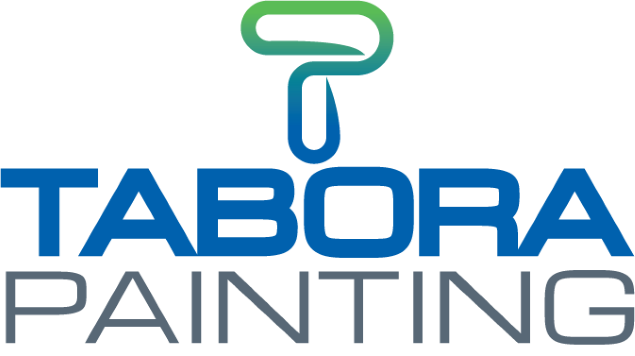At Tabora Painting, we love bringing our painting expertise to your home. But we get it–sometimes you want to tackle a project on your own. Let us help you get ready with a checklist of painting essentials.
Getting Started: Surface and Room Preparation Tools
Investing time in meticulous surface preparation is the most effective way to prevent common painting problems like peeling, bubbling, and uneven coverage. Think of surface preparation as the foundation of your painting project – a little effort upfront ensures a significantly better outcome down the line. The following items will help you prepare your surfaces like a painting pro:
- Painter’s Tape: This is crucial for creating clean lines and protecting trim, windows, doors, and other areas you don’t want to paint. The blue “multi-surface” tape is generally a good all-around choice.
- Drop Cloths or Plastic Sheeting: Protect your floors and furniture from paint splatters and drips. Canvas drop cloths are reusable and durable, while plastic sheeting is more budget-friendly for smaller areas.
- Spackle or Joint Compound: For filling nail holes, small cracks, and imperfections in your walls and ceilings.
- Putty Knife (various sizes): Used to apply spackle smoothly and scrape away loose paint or debris.
- Sandpaper or Sanding Block (various grits): For smoothing out spackle, rough patches, and glossy surfaces to help the new paint adhere better. A medium-grit (around 120-150) and a fine-grit (around 220) are useful.
- Paint Scraper: Useful for removing old paint drips or peeling paint.
- Cleaning Supplies: Soap, water, and sponges or rags to clean walls before painting. This removes dust, grease, and grime, ensuring good paint adhesion.
- Ladder: A sturdy ladder is essential for reaching higher areas.
Time to Paint: The Essential Tools You’ll Need
Let the painting begin! After preparing your surface, make sure you have everything you’ll need to apply the paint to your space.
- Paint: Of course! Choose the right type and finish for your project (e.g., latex or acrylic, matte, eggshell, satin, semi-gloss, or gloss). Don’t forget primer if needed, especially for bare drywall or significant color changes.
- Paint Rollers: For covering large, flat surfaces like walls and ceilings. Consider different nap lengths depending on the surface texture (shorter nap for smooth walls, longer nap for textured walls).
- Roller Frame: Holds the roller cover. A telescoping extension pole can be a lifesaver for reaching high walls and ceilings without constantly using a ladder.
- Paint Roller Tray and Liners: Holds the paint for easy roller loading. Disposable liners make cleanup much easier.
- Paint Brushes: For cutting in edges, painting trim, and getting into corners and tight spots. Different sizes and angles are helpful. Angled sash brushes are great for trim work.
- Paint Can Opener: A simple tool that makes opening paint cans much easier and prevents damage to the lid. A flathead screwdriver can also work.
- Stir Sticks: For thoroughly mixing paint to ensure even color and consistency.
Easy Cleanup: Cleaning Tools for Your Painting Supplies and Space
Okay, now that your room is beautifully painted, it’s time for the less glamorous but equally important task of cleaning up! Here’s a list of cleanup tools you’ll likely need:
- Damp Rags or Paper Towels: For wiping up drips and spills.
- Warm Water and Soap: For general cleaning of latex paint splatters on surfaces.
- Mineral Spirits or Paint Thinner (for oil-based paint spills): Use carefully and ensure good ventilation.
- Roller Scraper or 5-in-1 Tool: To remove excess paint from roller covers. A 5-in-1 tool can also be used for scraping dried paint, opening paint cans, spreading putty, and removing trim.
- Buckets: For rinsing brushes and rollers (if you’re not using disposable liners) or for carrying supplies.
- Brush and Roller Cleaner: For cleaning your painting tools. Follow the instructions on your paint for the appropriate cleaner (usually water for latex and mineral spirits for oil-based).
- Paint Scraper: Useful for removing dried paint drips.
- Gloves: To protect your hands from paint and cleaning solutions.
- Trash Bags: For disposing of used painter’s tape, roller tray liners, and other waste.
Having these essential tools on hand will set you up for a much smoother and more successful interior painting project!
Tabora Painting is Ready to Help
Should you decide that your painting project is too difficult or you simply don’t have the time, the Tabora team is ready to help. We’ll get your painting finished so you can tend to other priorities. Give us a call!
Free Consultation
Ready to transform your home or business with a fresh coat of expertly applied paint? Contact Tabora Painting today for a free consultation. Let our experienced team bring color and life to your spaces, tailored to your unique vision and needs.
